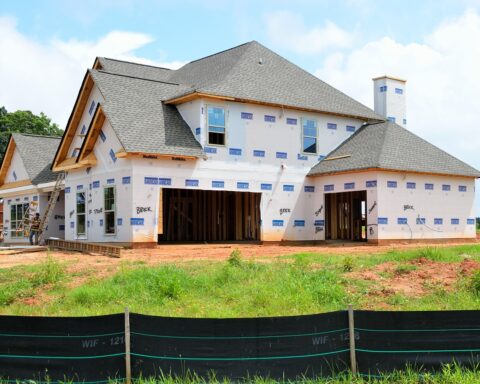Hotels, office buildings and lots containing multiple small houses may soon be alternatives to traditional single-family homes as several states and cities are looking at creative ways to make more cost-conscious housing available.
The federal government recently announced several initiatives looking at ways to make housing available through non-traditional means. States and cities have followed suit, with some doing so without turning to federal grants or financing programs.
Last week, Wisconsin and Texas made announcements focused on attainable housing for low- to medium-income families — those that make up to 100% of the average median income (AMI) for an area.
Wisconsin announced it was making millions of dollars of state funding available to expand cost-conscious housing for the state’s workforce, including a program that aims to renovate unused office space into living space.
The state’s 2023-2025 biennial budget includes a $525 million investment in workforce housing — its biggest ever — including two programs created this year as part of a bipartisan package of bills.
Wisconsin’s Vacancy-to-Vitality Loan Program allows developers to apply for loans to cover the costs of converting vacant commercial buildings to workforce or senior housing. Developers can apply for up to $1 million or 20% of the total project cost at a low-interest rate of 3% – or 1% in municipalities with a population of less than 10,000.
Vacancy-to-Vitality can be used to support multifamily apartments or single-family homeownership, the state’s housing authority said.
Single-family homes financed with the Vacancy-to-Vitality Loan Program are reserved for families earning up to 140% of the area’s AMI. Annual housing costs cannot exceed 30% of family earnings. Homes must be owner-occupied.
Multifamily units financed through Vacancy-to-Vitality are reserved for families earning up to 100% of the area’s AMI. Annual housing costs cannot exceed 30% of family earnings. All apartments must remain affordable for 10 years.
The state’s Restore Main Street Loan Program, also announced last week, provides funding for building owners to cover the improvement costs for housing located on the second or third floors of an existing building with commercial space on the ground level. Borrowers can apply for up to $20,000 per housing unit or 25% of the total rehabilitation cost at a low-interest rate of 3% – or 1% in municipalities with a population of less than 10,000.
The rent on the units must be set at 30% or less of the area’s AMI. Families living in the units must make at or below the area’s AMI.
Both programs require municipalities to take steps to reduce the eligible project’s cost by voluntarily revising ordinances or regulations that affect the project. Municipalities must also update the housing element of their comprehensive plans within five years.
“Together, these new programs give us even more opportunities to add much-needed affordable housing in both urban and rural areas of our state that are desperate for safe, stable homes for working individuals, families and seniors,” said Elmer Moore Jr, executive director of the Wisconsin Housing Economic Development Authority (WHEDA) in a press release.
In Texas, the Austin City Council on Thursday approved phase one of the city’s Home Options for Middle-Income Empowerment (HOME) initiative. The program is intended to expand housing options and availability for residents by revising the city’s land development code.
Rent and home prices have risen significantly in Austin since 2020. The median price of a for-sale home in Austin is now $544,000, a 23% increase over the past three years. During that time, rent has risen over 25%.
The first phase of the HOME initiative bumps up the number of units allowed on a single-family lot from one to three. It also patches loopholes in Austin’s land development code to consider tiny homes as units on single-family zoned lots.
A potential increase in available housing could drive down costs, proponents of the changes say, and smaller units could result in lower prices simply based on cost per square foot.
Prioritizing affordable housing
Some areas have recently announced initiatives to expand options beyond attainable housing. Those include affordable housing for households earning under 61% of an area’s AMI and supportive housing for people with disabilities.
During Washington’s most recent legislative session, lawmakers allocated $1 billion to speed up construction of all types of housing ranging from supportive housing to affordable housing.
Last week, Washington Gov. Jay Inslee announced a budget proposal providing an additional $100 million to maintain the state’s Rapid Capital Housing Acquisition (RCHA) Fund. The fund has made it possible for state agencies and local partners to reduce urban camping by opening emergency housing options such as tiny home villages and converted hotels, the state said.
Over the last 18 months, RCHA funds and the encampment resolution program have enabled state agencies and local partners to clear encampments and provide emergency shelter to people living on state rights-of-way, the governor’s office said.
“We can’t slow down on our efforts. If anything, our success should give us confidence to go bigger, faster,” Gov. Inslee said in a press release. “And I want to be clear about this: this funding won’t serve just a few people. The housing and shelter space we open now is going to be around for decades to come. It’s going to help countless people break the vicious cycle of poverty and homelessness.”
Kansas City’s Affordable Housing Trust Fund is an example that focuses on permanent affordable housing. The fund, created in 2018, focuses on providing viable affordable housing in extremely low, low, and moderate-income neighborhoods. Since the program’s creation, the city has awarded $17 million to 28 projects that have made more than 1,000 affordable housing units available.
The fund’s funding requirements include:
- 20% for affordable rental creation (at or below 60% AMI).
- 20% for affordable rental preservation (at or below 60% AMI).
- 10% for transitional housing and permanent supportive housing for the homeless.
- 10% for homeownership support and/or retention programs (at or below 60% AMI).
- The maximum grant awards given to for-profit developers is 10% of their total development costs (15% of total development costs for nonprofits).
- The maximum loan award to for-profit developers is 20% of costs (30% of costs for nonprofits).
All news and information on this site is provided by the team at Strategic Partnerships, Inc. Check out this short 1-minute video that provides a quick overview of how we work with clients.













